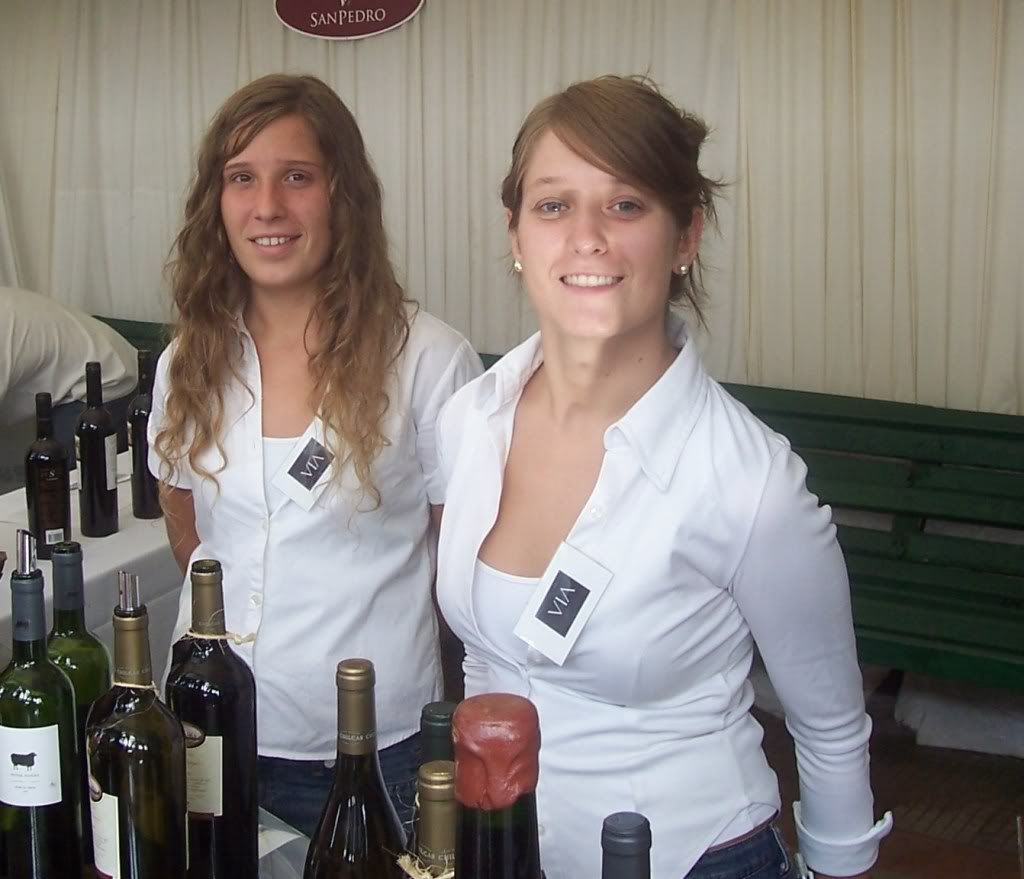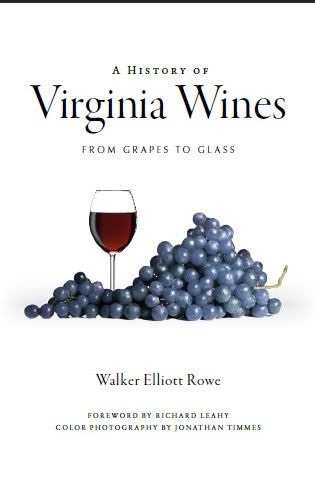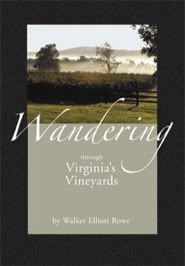John Genho, is a 29 year Ivy League school graduate who reads the Wall Street Journal and farms 7,600 acres of pastureland and forest in Rappahannock County. His crew includes a cowboy from Florida, a former rock-n-roller who had a top 40 hit, two other farm hands, an office person, and a pack of border collies and other types of working dogs.
People who live in Rappahannock County know Eldon Farms, if only by reputation, as the local environmentalists eye what might be the largest tract of contiguous land in three counties hoping the owners never carve it up for development. Running all the way from Slate Mills Rd to Sperryville this sprawling farm cross both sides of highway 522 with 24 rental houses and 100 buildings on the property plus 65 miles of fencing. Unlike so many of the hobby horse and cattle farms in the county—whose owners sometimes say they “farm” although they produce no profit--this farm is a working farm whose revenue pays the salaries, the medical bills, the food, and the clothing for the handful of people who work there.
Eldon Farms has for 40 years belonged to the Lane Family whose founder William “Bill” N. Lane, II died in an automobile accident near the family's Bell Ranch in New Mexico some 30 years ago. The late Mr. Lane was an astute businessman who bought an interest in a Chicago book binding company acquiring other properties which continue under family ownership as Lane Hospitality, Acco Brands and others. His widow continued to spend time at the house they call “Little Eldon” and his son Nelson still knows people in the county.
John Genho does not deal with the family members too much since Eldon Farms is owned by the corporation and run as a business. The same environmentalists who are eager to assert an easement across the farm will be comforted by the fact that John sits on the Culpeper Soil and Water Conservation District board, a generally elected position, with Monira Rifaat who of course is an advocate of conservation easements. Cliff Miller was formerly on that board and has put much of his Mount Vernon Farm into the CREP and BMP cost sharing programs which pay farmers to keep cattle out of the stream. Eldon Farms is doing that too although it will take a while with so many miles of fencing to replace. The BMP cost sharing program has been boosted from 75% to 85% plus Rappahannock has a matching funds program from a donor for $50,000 for the 15% gap.
John is a Mormon who went to school at Brigham Young then Cornell where he studied animal genetics. He lives on the farm in a large house with his child ren and wife who likes to take photos and upload them to the family's blog.
Farming, of course, is hardly profitable anymore the costs of machinery, grain, and land having put profitability out of the reach of possibility for most family farms. John says Eldon Farms breaks even and has a positive cash flow in the years when he is able to cut timber, the mountainous forest here harboring some veneer quality red oak. Because of the crash in the housing market , timber prices have fallen to “65-70% of what the value was a couple of years ago” so logging is no windfall.
John says, “When you look at our accounting we make money off cattle.” But it won't make you rich adding, “It's not something you would want to take out a loan and start a business. We have 24 rental houses. If we can cut timber we have positive cash flow.”
Every day John checks the price of feeder cattle and corn on the Chicago Board of Trade. He says that for years corn traded for $2 to $4per bushel. “But last summer corn was trading over $7 dollars. Grass has all of a sudden become more valuable.” The traditional model for a cow calf operation has been to raise cattle to 500 pounds weight then sell them at the livestock auction where they would be shipped off to large feeding operations in Nebraska or small Mennonite Amish-run operations in Pennsylvania where they would be fed corn until they reach their 1,200 pound slaughter weight. Corn is now back down to $4 per bushel, still feedlots prefer calves that weight 700 to 800 pounds because it takes less time and less money to fatten up the cows for slaughter. In order to each that extra weight 200 to 300 pounds of weight the rancher needs to overwinter the cattle which is difficult to do if you have to pay for hay. Eldon Farms does not have to buy hay because they bale their own and stockpile fescue for the winter—that means they simply leave certain paddocks ungrazed and unclipped.
John has 1,400 head of cattle on the farm including 500 calves which in June will be headed to market. In January he sold those calves which weighed more than 600 pounds to the Winchester livestock market and was pleased by the price in the off season sale. October and November are, “The Absolute worst time to sell them, because no one wants to take them through the winter.”Calves kept over the winter are called “stocker cattle”.
Of other parts of the country John says, “Nebraska grasslands are prime cow calf country”. But the disadvantage there is you have to supply hay in the winter while in Virginia fescue grass can be stockpiled for the winter. He says, “The three best things about fescue are January, February, and March and the worst are June, July, and August.” By this he is referring to the endophyte infected tall fescue grass which dominates the landscape here. The fungus lives in harmony with the plant thus giving it the ability to tolerate the cold winters here. But in summer endophyte causes cattle to lose rather than gain weight as their respiration and heart rate increase. The alternative would be to try and kill all the fescue and replace it with orchard grass or something like MaxQ fescue but that takes time and costs money.
To boost protein Eldon Farms plants some summer annuals like pearl millet and small grains like barley but only on a small scale for their heifers that will become breeding stock to give them an extra boost. His focus instead is to maintain the highest quality pasture as he rotates stock from one paddock to another to both improve the grass stand there and keep the animals from overgrazing pastures, which would expose them to lethal intestinal parasites which live in the soil.
John's ideal pasture management system would be to sample 20% of the pastures each year and then apply fertilizer according to the soil sample. But prices have wrecked havoc on the ideal situation. He says, “What we are really interested in is getting the phosphorus and potassium right and for nitrogen we figure if we can clover into the field nitrogen will take care of itself. Unless we are stockpiling fescue we cannot afford to put nitrogen on the field.” But he ads, “Potassium prices went from $100 per ton to $1000 per ton so we cannot afford to buy that. I would love to put potassium and phosphorus down on our field. Nitrogen gives you a short term bloom but it leaches out pretty fast. Potassium and phosphorous give you a good healthy field.”
The two cowboys Robert Gainer and Rich Bradley and the farm manager John Genho offer to saddle up the horses and move the cattle on horseback for the visiting journalist but pick up trucks and dogs will do just fine. Ray Bennett is waiting at the other end of the pasture several miles away as the lowing herd is marshalled toward tender new ungrazed grass at the other end of the village of Woodville. The grass here is a mix or orchard grass and clover with some blue grass and fescue mixed it—it is what the farmers would call “lush”. A dozen bulls barely lift their heads as we drive by in a pickup truck in order to meet the cowboys and the herd. The bulls have long ago worked out which one is dominant and the lesser males take care to stay out of the way of the largest. John says each year a couple are injured killed fighting. He says, “This is what it means to be a male.”
We have completely blocked one of the winding lanes leaving Woodville as the herd is turned down the road. The working dogs snap at the heels of the cows as they push them along. There are so many cows one wonders for a moment whether you would be crushed if they stampede. John's border collie is meant to be at the front of the pack but is working at the back as he responds to John's verbal signals. The border collie lurks behind a few stubborn cows then nips at them as the cows briefly challenge the dog then retreat. A couple hundred heifers are in the pasture on the other side of the road and crowd the fence trying to join the larger herd. Traffic, if there were any on this almost abandoned road, would not be able to pass as the animals have taken over a ¼ mile of unpaved roadway. The cattle kick up dust on their way to the other pasture. The herd moved to the new location the cowboys return to their never ending task of maintaining the fences.








3 comments:
THis is a very informative article. The photos are terrific.
THanks! Bev Hunter
I loved the article and the pictures. I have always wanted to know more about that big farm.
cattlebarroness
It is my distinct pleasure to live in Hall House (all Eldon Farm's houses are named) on Eldon Farms. I've been there a year in August. I have to say it's undoubtedly one of the most beautiful environments I've ever had the pleasure of occupying. I LOVE telling people I live on a 7,600 acre working cattle farm. John and "The Crew" (to include horses, various Border Collies and Rich's constant canine companions Maggie & Chet) at Eldon Farms are a one in a million bunch - friendly, knowledgeable, talented, accommodating and very laid back.
When you get in your car to go to work in the morning and you witness three men on horseback and several Border Collies herding about 75-100 head of cattle across a pasture across the road from your house - well - for me, it's as close to heaven as I can be. It validates for me that I'm exactly where I'm meant to be.
Post a Comment